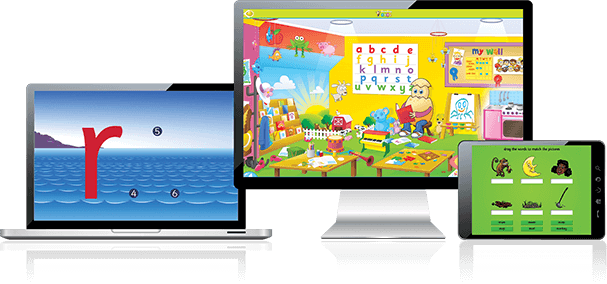Some Phonics Rules To Keep in Mind While Teaching
Phonics is matching the letter sound to the individual letter or group of letters for the child to be able to start the process of reading, and then writing. It is a very systematic approach by which learners are taught to decode the words by simply giving it a glance. We would like to enumerate a few benefits of teaching phonics, which has now become a common practice across K-12 schools in Dubai and other GCC regions. Phonics helps build spelling proficiency, recognition of words becomes easier, vocabulary is enhanced, and students feel more comfortable while conversing and reading in English.
To become an Ace at phonics, there are some basic rules that need to be followed such as;
#1 Short and Long Vowel
Sounds We know that in English there are five vowels ‘a, e, i, o, and u’. Phonics emphasizes on the correct pronunciation of these vowels, based on their position within the word. Seems a bit confusing! Let us illustrate the same with some examples;
When the vowel is usually (not in all cases) preceded by another vowel next to it, it takes the long vowel sound:
/a/ – rain
/e/ – tree
/i/ – ride
/o/ – soap
/u/ – tube
Long vowels resemble the actual letter name of the vowels: A, E, I, O, and U.
When the vowel is generally preceded by a consonant it takes the short vowel sound. Most CVC words follow the short vowel pronunciation pattern.
/a/ – man
/e/ – ten
/i/ – iguana
/o/ – mop
/u/ – sun
As the name suggests the short vowels have a shorter emphasis while reading the word and they are generally shorter sounding than long vowel sounds. It is said to be a monophthong, which means it is a pure vowel sound that has a single auditory note.
#2 Schwa: The Lazy Vowel Sound
You must be wondering what this odd-sounding word Schwa is? Well, Schwa is commonly referred to as the lazy vowel sound. But why does it have a reputation for being lazy? The vowels A, E, I, O, U, and sometimes Y is included in the rule and when the word requires the reader to pronounce the vowel more silently, putting less emphasis, it becomes the Schwa sound. When referring to Schwas you represent it by writing it in such a manner ‘ə’, an upside down ‘e’. Some examples of Schwa sounds are.
salad (the second a is Schwa)
lemon (o is Schwa)
pencil (i as Schwa)
syringe (y as Schwa)
item (e as Schwa)
supply (u as Schwa)
Try pronouncing the word banana (you would notice that while saying the first ‘a’ you are not stressing on it, but while reading the second & third ‘a’ you put more emphasis). This means that the first ‘a’ in ‘banana’ is the Schwa. It goes fast and the mouth doesn’t open widely to spell the Schwa letter. Most K-12 schools in Dubai and other Middle East regions, teach children phonics, as it is a sure-shot approach to building a strong foundation over the language.
#3 The Silent ‘e’ rule
Make things interesting for kids by telling them a story about the ‘magic e’ sound. The ‘e’ is very much there in the word, but no one can use it while reading the word aloud. Why does it magically disappear?
VCE (Vowel – Consonant – E) is a concept when the word ends in E and is preceded by a consonant. Some of the examples are as follows;
cute
note
twine
vane
When the silent ‘e’ appears, it makes the other vowel in the word before it say its name (long vowel form – letter name).
In Phonics there are 44 sounds, and we can see how important it is to apply the above rules in order to correctly spell words and recognize them easily. Phonics is an evolving extension to language development and the Reading Eggs platform, which is popular in the UAE, is making sure phonics learning is made accessible and fun for all students. Under its Fast Phonics section, children can subscribe to online phonics games and attempt to complete 20 levels, each one getting more profound than the other. Access their full library of videos, books, and activities, which are used even by tutoring class educators in GCC regions. Children love Fast Phonics, so start your mission of educating students, one day at a time!






Recent Comments